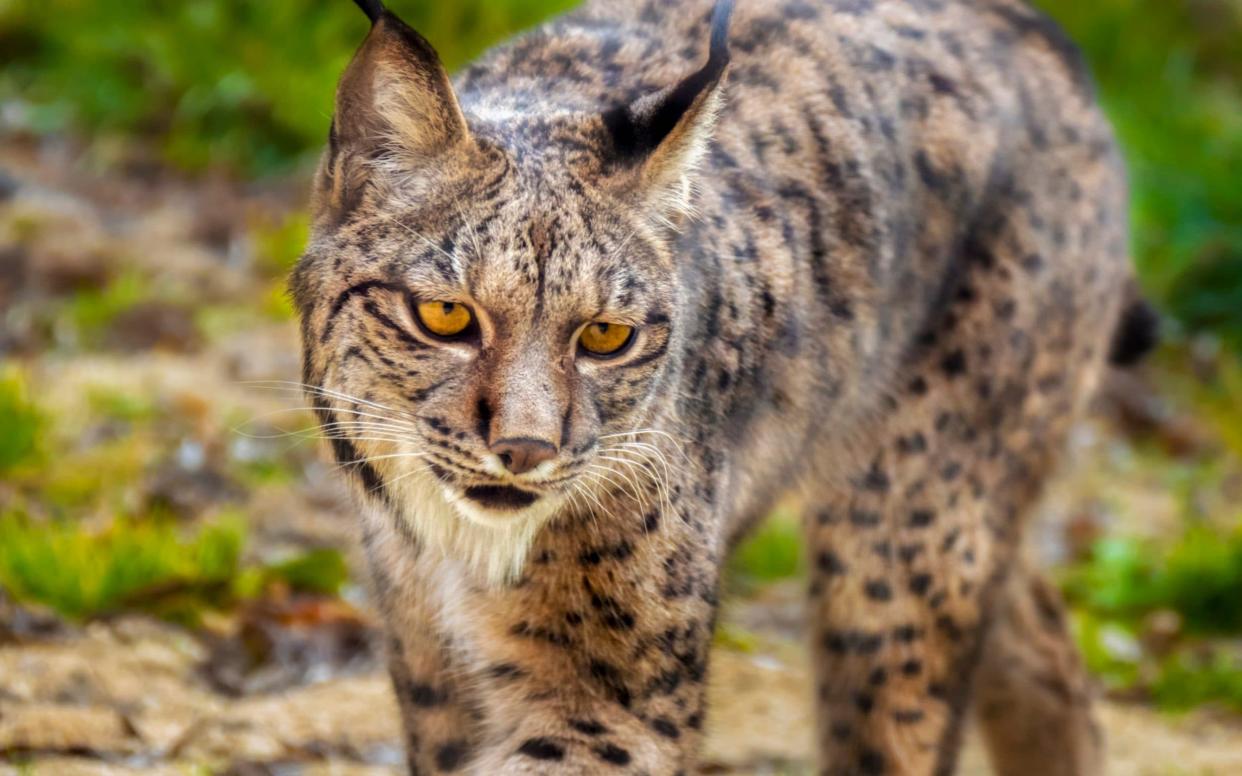Spain toasts lynx success as species once on brink of extinction set to number in the thousands for first time

Having been on the cusp of extinction, the Iberian lynx is poised to spring to a four-figure population milestone thanks to a successful and sophisticated rescue effort mounted by a coalition of conservation groups.
A key member of that coalition, Ramón Pérez de Ayala of WWF Spain, has told The Daily Telegraph that the stock of Iberian lynx is set to reach 1,000 in 2021 - a figure which may not mean this beautiful feline is entirely out of trouble, but which represents a remarkable turnaround after numbering less than 100 two decades ago.
“We have done so much destroying of nature in Europe that we needed a clear success story for our credibility,” said Mr Pérez de Ayala.
“I’m totally confident we will reach 1,000 in the next year. We know our methods work and that we can reach a favourable conservation status for the Iberian lynx – which is our obligation.”
In the first census in 2002, researchers found that the Iberian lynx had become the world’s most critically endangered cat species with 94 animals remaining in two parts of southern Spain: the Doñana wetlands national park and the Andújar mountain region in northern Andalusia.
Thanks to a programme of captive breeding and releasing the animals into optimal areas for their survival, the 2019 census just completed by WWF found 855 lynxes, in four basic areas in Spain and one in Portugal. But the challenges remain complex.
“I know now how to create lynx populations; lynxes are easy. It’s rabbits that are my biggest headache,” Mr Pérez de Ayala said.
Spain, which gets its name from the Carthaginians who called the country Ispania, “land of the rabbits”, has seen its population of bunnies plummet due to the presence of Myxomatosis and Rabbit haemorrhagic disease.
The rabbit forms 90 per cent of the Iberian lynx’s diet, leading conservationists to breed the animal for release in lynx-inhabited areas and even building ideal burrows in an attempt to build back populations.
Convincing farmers to accept the presence of rabbits is another challenge, while Spain’s hunting community has to be convinced that lynxes will not devour the entire rabbit population and will actually leave more for shooting by expelling other medium-sized predators.
“Rabbits love roadside verges, too, and that attracts lynxes, which is partly why we see so many run over,” Mr Pérez de Ayala said.
Thirty-five lynxes were killed on the roads in 2019, and, while final figures are not yet in, 2020 looks to have been just as bad or even worse. Conservationists believe that lower levels of traffic during lockdowns may have encouraged the shy animal to approach roads, often with disastrous consequences. However, Mr Pérez de Ayala said, local authorities are learning to build roads with lynx behaviour in mind.
The next five-year plan for the €18.8m Life Lynxconnect conservation project, 60 per cent funded by the EU, focuses on taking lynxes to new areas and corridors connecting populations. “Like an oil slick, we want areas to join up one by one,” said Mr Pérez de Ayala.
Data is crunched to find the right areas in terms of rabbit populations, road safety - for which surveys of fox roadkill are carried out as the numbers match neatly between the two species - and, crucially, the state of the gene pool.
“As you can imagine from beginning with fewer than 100 lynxes, the genetic variation we have is extremely low. But we know virtually each individual, so we are monitoring our populations to spot endogamy problems and will capture and breed accordingly to maintain as much variety as possible,” Mr Pérez de Ayala explained.
The aim is to multiply the number of reproductive females by four to around 750 by 2040, and remove the Iberian lynx from the endangered category on the International Union for Conservation of Nature’s Red List of threatened species.

